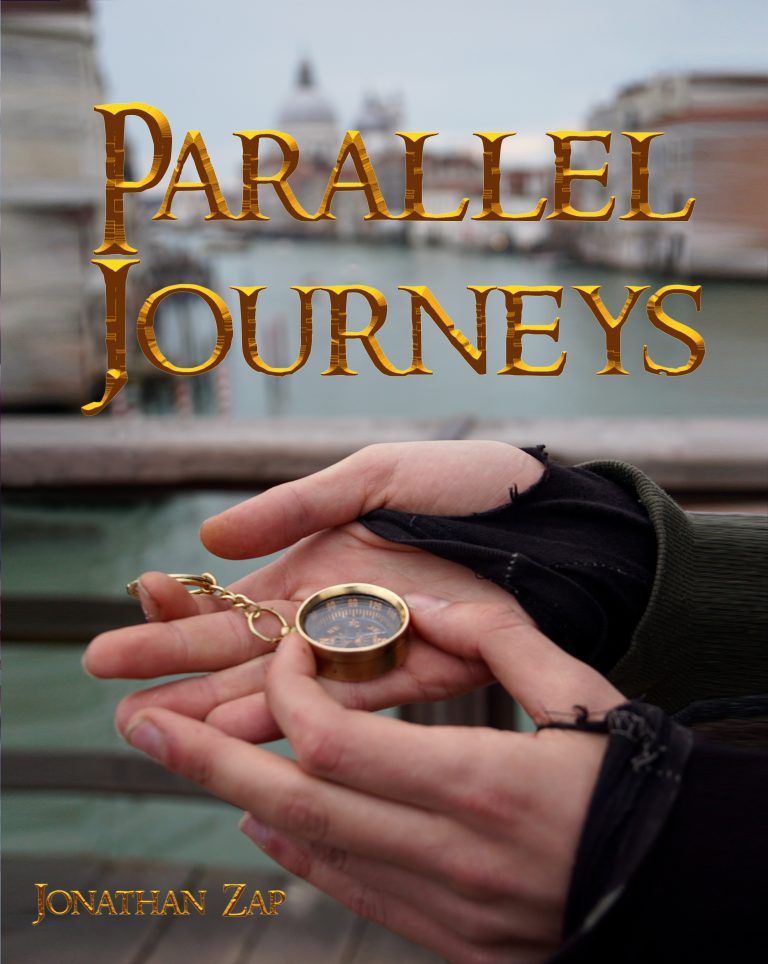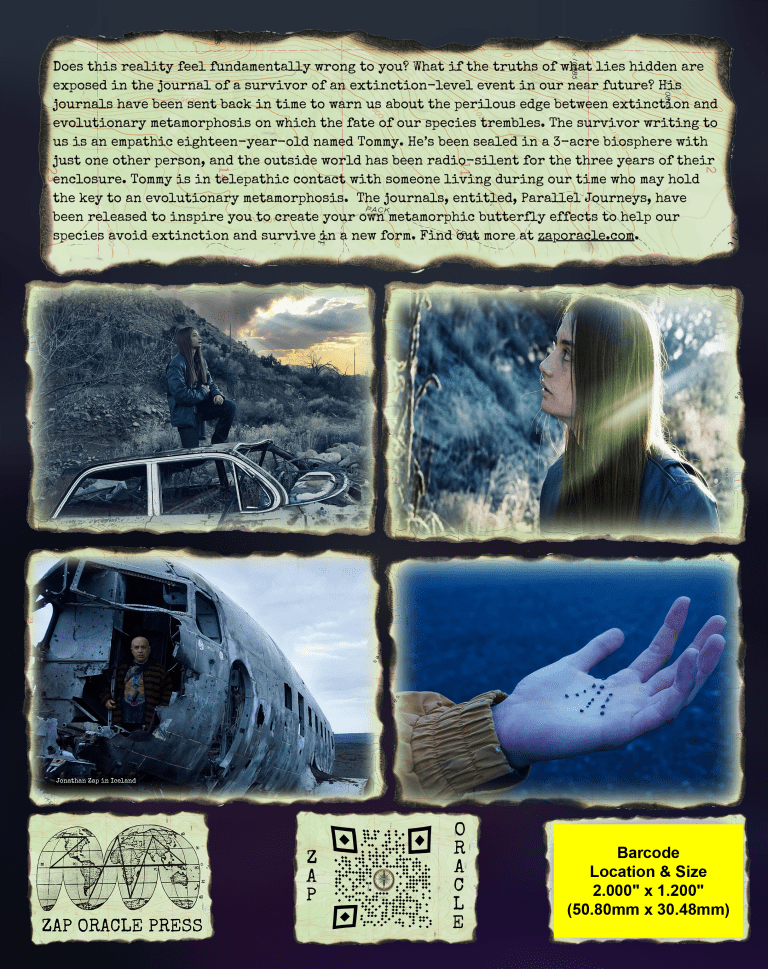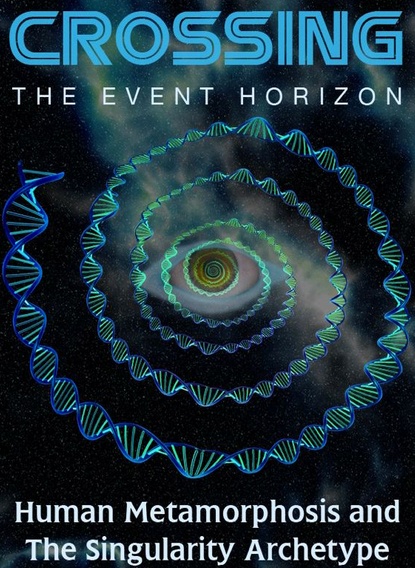Survival of the Soul
WATCH THIS CARD AS A VIDEO
Then, death, so call'd, is but old matter dress'd In some new figure, and a vary'd vest: Thus all things are but alter'd, nothing dies; And here, and there the' unbody'd spirit flies. — Roman poet Ovid in Metamorphoses "What you have perishes; what you are survives beyond time and space." — Death Notice "When the clock strikes me, the powers of being will prevail over the powers that be." — Saul Williams "On__________Jonathan Zap won his long battle with corporeality by dying." (My future epitaph, in my official estate documents.) The soul can survive the death of the body. I do not base this conclusion on faith or religious doctrine but on experience and evidence. The intense fear of death as annihilation I had as a child vanished after a certain number of out-of-body experiences. The direct experience of awareness being outside my body, and incredibly enhanced by that separation, changed my perception of death from emergency to emergence. My fear of death as annihilation was replaced by a deep intuition of death as an orgasmic portal. My personal experience shouldn't convince you, but a careful study of near-death experience findings should be enough to convince an open-minded skeptic that death is an event horizon, not a pit of oblivion. The position of neurological materialism, the belief that consciousness is an epiphenomenon or secondary effect of biochemical process in the brain, is resoundingly and definitively contradicted by NDE findings. Consciousness does not reside in the brain, and electrical activity in the brain is not a prerequisite for consciousness.* (see example of NDE evidence below) There are also many well-documented cases of ADC (After Death Communication). I had my first evidential experience at two and a half years old, and there have been ongoing experiences since 2013. After his death, Dante's son received a communication from his father about where in the attic he could pull up floorboards and find an unpublished manuscript. A few anecdotes shouldn't convince you, but the overall weight of well-corroborated evidence should be more than sufficient. *The following example of NDE evidence is far from the most impressive but is chosen because of the arch-conservatism of its source — National Geographic — an organization known to be unfriendly to paranormal claims. What follows are some transcribed excerpts from the National Geographic documentary: The Moment of Death Al Sullivan, a man who has survived a multiple bypass operation relates, "In the operating room here comes Dr. Takata whom I had never laid eyes on before. He introduced himself, 'Hi Mr. Sullivan, good afternoon, I am Doctor Takata." and he told me what he was going to do: 'We are going to take veins from the legs and take arteries also from the chest wall and probably do four or five bypasses for you.' And I'm listening, listening, and all of a sudden I don't have to listen to him telling me I can see what he is doing, because I found I wasn't there to listen anymore. I just left my body and watched. I can see, but I'm up looking down at them. It used to be me, but it wasn't me because the real me is up here watching. That's when they started putting stuff over my eyes and all kinds of drapes and blankets all around me and I still, I could see Dr. Takata and his people, and this is another thing, I could see through the operating table and me and I could see what kind of boots he had on. At one point, he stepped back, the surgeon stepped back, and it looked like he was flapping his arms, and I thought: What in the world is he doing that for?" Al continues, "He was orchestrating: Do this, do this, and do that, and it did seem very foreign to me what he was doing." Al demonstrates Dr. Takata's strange movements, his hands to the sides of his chest, elbows bent, twisting around, and pointing with his elbows as he gives commands. Dr. Anthony F. Lasala, MD, cardiologist at Hartford Hospital explains: "Dr. Takata, when he's not operating, and trying not to contaminate his hands, will put his hands close to his chest and point with his elbow." Dr. Lasala: "Al Sullivan would not know of this peculiar behavior of Dr. Takata. I did not tell him that." Dr. Takata: " I cannot explain how he saw these things under the complete sleep of anesthesia." Dr. Lasala: "Even if he was conscious, it would be impossible for Al to see Dr. Takata's stance or arm movement because Al was behind a drape that blocks the vision of the patient, and his eyes were taped shut." My two major book-form works(both available free on this site) are directly related to afterdeath survival.
My sci-fi epic on the singularity, Parallel Journeys , is my most vivid of evocation of survival.  Opening premise: Does this reality feel fundamentally wrong to you? What if the truths of what lies hidden are exposed in the journal of a survivor of an extinction-level event in our near future? His journals have been sent back in time to warn us about the perilous edge between extinction and evolutionary metamorphosis on which the fate of our species trembles. The survivor writing to us is an empathic 18-year-old named Tommy. He's been sealed in a three-acre biosphere with just one other person, and the outside world has been radio-silent for the three years of their enclosure. Tommy is in telepathic contact with someone living during our time who may hold the key to an evolutionary metamorphosis. The journals, entitled Parallel Journeys, have been sent back in time to inspire you to create your own metamorphic butterfly effects to help our species avoid extinction and survive in a new form.  Parallel Journeys, can be read free on this site. If you prefer Audible, Kindle or physical versions, those are all available on Amazon.  My book on the Singularity Archetype, Crossing the Event Horizon — Human Metamorphosis and the Singularity Archetype now has a second edition available free on this site. The Singularity Archetype mediates the parallel event horizons of death and species metamorphosis. Especially relevant is Chapter Three — The Singularity Archetype and Near-Death Experience Also free — see: Beyond the Brain — The Survival of Human Consciousness After Permanent Bodily Death Jeffrey Mishlove which presents nine domains of evidence. |
||||||||



